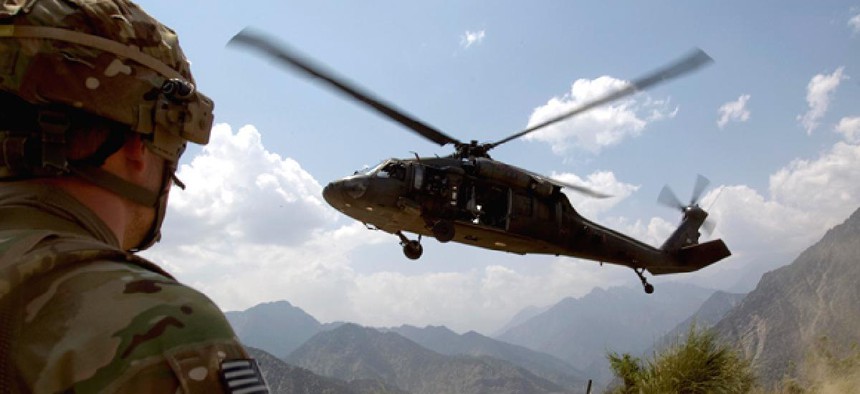Sikorsky lands $8.5B helicopter deal after UTC admits to export violations

David Goldman/AP
Award comes days after Justice slams United Technologies divisions for helping China develop attack helicopter.
The Sikorsky Aircraft division of United Technologies Corp. won an $8.5 billion Army and Navy contract for 653 Blackhawk helicopters, just 12 days after a federal investigation revealed other UTC subsidiaries helped China develop its first attack helicopter.
Sikorsky said the Army-Navy contract signed Monday includes production of UH-60M utility and HH-60M medevac helicopters for the Army; MH-60R and MH-60S helicopters for the Navy; and an undisclosed number of aircraft for allies, including Australia, through the Foreign Military Sales program.
The five-year agreement has options that would allow the Army and Navy to order as many as 263 more aircraft, pushing the contract value as high as $11.7 billion.
In June, United Technologies pleaded guilty to violating the 1976 Arms Export Control Act and making false statements in connection with exports of software that China used to develop its first attack helicopter.
The company’s Pratt & Whitney Canada division started pursuing the Chinese civil helicopter engine market in 2000 and turned a “blind eye” to the fact that China’s priority was development of an attack helicopter, the Justice Department said.
The Canadian company tapped another United Technologies subsidiary, U.S.-based Hamilton Sundstrand, for electronic engine control for the Chinese helicopter program.
The United States has prohibited the export of military hardware and software to China since 1989, and in 2006, United Technologies informed the State Department that an export violation occurred with the software supplied to China. United Technologies failed to disclose that Pratt & Whitney Canada knew from the start in 2000 that China sought the technology for an attack helicopter, Justice said.
David Fein, U.S. attorney for the District of Connecticut, said Pratt & Whitney Canada “exported controlled U.S. technology to China, knowing it would be used in the development of a military attack helicopter in violation of the U.S. arms embargo with China.” Fein said the company “took what it described internally as a calculated risk, because it wanted to become the exclusive supplier for a civil helicopter market in China with projected revenues of up to $2 billion.”






